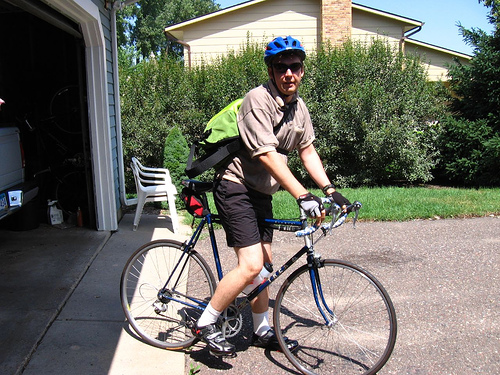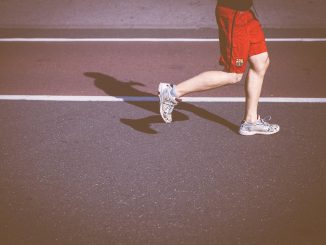
Injuries aren’t uncommon for athletes. Even professionals experience them from time to time. The world of cycling is no different, and no matter how experienced you are, injuries can still occur. Cycling injuries can be complicated, and they can require certain precautions in order to heal properly.
The most important thing to active cyclists after experiencing an injury is to recover quickly. The faster your recovery, the sooner you can get back on the bike. But cycling injuries can have long-term effects if they aren’t properly treated.
Both pro cyclists and casual bike riders experience accidents. A study from 2016 reported that in the U.K. alone, over 3,000 cyclists were seriously injured due to accidents. Another 14,978 suffered from minor injuries.
Whether a cycling injury is your fault or not, the best thing you can do is to learn how to train and recover properly. So, what is the best way to ensure a speedy healing process with as little pain as possible?
What Are the Most Common Cycling Injuries?
No two cycling injuries are exactly the same, but some are more common than others. The biggest problems cyclists often face after a crash are:
- Broken bones
- Head injury/concussion
- Muscle strains
- Road rash
Obviously, if your injury is serious or you experience a concussion, it’s important to seek out medical attention immediately. The clavicle is one of the most common bones for a cyclist to break during an accident, but any of the bones of the upper body can be prone to damage.
Injuries can vary depending on the severity of the accident, the impact, how you land, etc. In some cases, you may need to even go through things like shoulder surgery if you tear a rotator cuff or your bicep tendon.
There are also cycling injuries that can occur over time, even if you never get in an accident. It’s important to remember that cycling can be an intense sport, and as an athlete, your body can get worn out from it. Things like pain in the lower back, knees, neck, shoulders, and wrists aren’t uncommon. You may even experience delayed onset muscle soreness (DOMS) from stretching your muscles.
How to Recover After a Crash
No matter the extent of your injuries, taking time to fully heal is essential to a healthy recovery. There are a few general things you should be doing post-crash to keep you strong and healthy so you can get back on your bike as soon as possible.
As simple as it may seem, one of the most important things you can do is rest. When you experience a cycling accident, your body goes through a lot of stress. Getting as much sleep as possible (especially the first few days after your accident) will allow your body to recover from that initial stress so you can focus on other forms of training and treatment.
If you suffered road rash, treating that yourself can be very painful. One of the best ways to make caring for your wounds easier is to shave around the injuries. Pick a great razor and get to it; this will help keep your wounds clean.
Taking care of your whole self, not just your injuries, is extremely beneficial for your recovery. This includes things like eating a healthy diet and finding ways to relax. Keep in mind that your body is trying to recover every day, even when you don’t realize it.
Taking time out for yourself is essential to the process, but it’s also important to keep moving. Movement can help you to feel better and can keep your muscles from tightening up. But don’t push yourself too hard. If you start to do some light exercise and you feel any pain, stop what you’re doing.
A crucial aspect of recovery is strength training. In fact, many physical therapists recommend strength training to help you recover faster and to keep you strong while you’re healing. When you have greater upper body strength, you become more resilient to cycling accidents. You’ll improve your balance, core strength, and stability. Chances are you’ll have to cut back on how intensely you train on the bike while you’re recovery, so it’s a great time to focus on resistance training instead.
Dealing With Pain After an Accident
Whether your accident was minor or severe, you’ll undoubtedly experience some kind of pain for awhile. It could be something as simple as tension in your muscles, or you could be dealing with chronic pain while you recover. This type of intense pain often comes with a variety of other side effects, including:
- Fatigue
- Sleep deprivation
- Mood swings
- Limited appetite
Thankfully, there are several different ways to manage chronic pain. If you’re worried about your level of pain and nothing seems to be helping, contact your doctor. Prescription medications and over-the-counter drugs are some of the most common options for managing pain. Changes in your diet, physical therapy, and even counseling can also help with pain management.
Alternative treatment options, like CBD, are becoming more popular thanks to their widespread availability. There are many ways of taking CBD, but using it topically is generally the most beneficial for pain management. It can help to ease joint and muscle pain and reduce inflammation. If you plan on taking CBD, check with your doctor first. While there are rarely any negative side effects associated with it, it can have negative interactions with other medications.
What Are Your Legal Options?
In some cases, you may be able to file a personal injury claim for your accident. If you were hurt and the accident wasn’t your fault, you could still have things like hospital expenses or time off work to take into consideration. If someone else is liable for the accident, you can file a personal injury claim, and your medical bills might be covered by the person who caused the accident or their insurance company.
Keep in mind that personal injury claims are lawsuits. Going through the process is tedious, time-consuming, and expensive. While it can work in your favor, you should be prepared to learn as much as you can about filing a claim before you actually do it.
The most important thing you need to figure out is who is really liable for the accident. Usually, when it comes to a cycle and a vehicle, it comes down to who had the right of way. If that can be determined and you’re not at fault, it’s more likely that you’ll win your lawsuit.
How Long Does It Take to Recover?
Recovery times are different for everyone. Obviously, it depends on the severity of your injuries. The better you take care of yourself, the easier it will be to bounce back quickly in most cases. Consider the long-term issues that could arise before you push yourself too fast in your recovery.
Avoiding bicycle accidents altogether is nearly impossible. Even if you’re a perfect cyclist, you can never fully predict what’s going to happen on the road. If you’re competing, another cyclist could get in your way. If you’re out for your morning ride, a car could come out of nowhere. However, being alert whenever you’re riding can help to make potentially life-threatening accidents less severe, as you’ll be able to give yourself more time to react safely.
As a cyclist, taking care of your overall physical and mental health will make it easier to recover after you’ve been in an accident. Don’t wait for an injury to occur to start doing things like strength training and proper stretching. When you stay strong throughout your cycling career, you’re more likely to recover quickly from an injury.






Be the first to comment